Do you have a dog who is always on the go? He probably spends his days driving you crazy with his endless array of enthusiastic activities, and he never seems to relax.
Maybe you have a dog who seems afraid of everything. His fear and stress are probably obvious most of the time, and he may never seem to calm down as he moves throughout his day.
Or perhaps your doggo is reactive. If so, he’s probably always on the lookout for something, and when he sees it, he explodes in a frenzy of barking, or get so distracted it’s like you don’t exist.
Dogs who have issues with hyperactivity, fearfulness, or reactivity may have trouble relaxing, or calming themselves down when they get excited.
It’s like they have simply never learned how to relax! Fortunately, there’s a way to teach your pooch to chill out — it’s called a relaxation protocol.
Below, we’ll outline one of the most celebrated relaxation protocols, list the things you’ll need to implement it, and explain the best way to teach it to your dog!
Karen Overall’s Relaxation Protocol: Key Takeaways
- Karen Overall’ relaxation protocol is a series of training exercises designed to help your dog learn to lay down and relax. The protocol can be helpful for just about any dog, but it’s particularly useful for those struggling with hyperactivity, anxiety, or reactivity.
- The protocol takes some time to work through, but most of the steps are easy to understand and implement. You won’t need a lot of equipment or supplies either — you’ll just need some treats and a mat (although you may also want a clicker and treat pouch too).
- Many modern trainers love the relaxation protocol because it relies on positive reinforcement. This is important as aversive training strategies may exacerbate the very behavioral concerns you’re trying to treat.
What Is a Dog Relaxation Protocol?
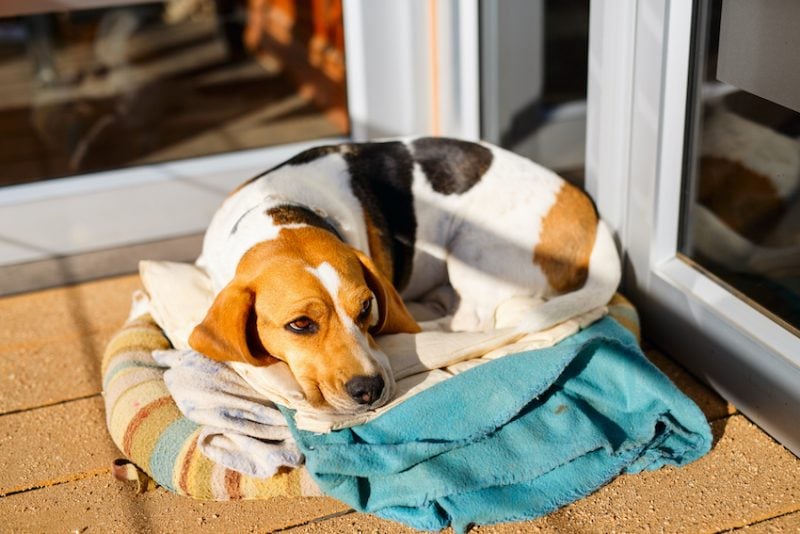
Teaching dogs how to do a behavior like “Stay” can help dogs learn to be still. But some dogs are poised in “work mode” the whole time they’re staying.
Sure, they’re staying in place, but they’re on high alert the entire time with every muscle tense.
This means they never actually relax.
Luckily, veterinary behaviorist Dr. Karen Overall noticed that our pet dogs could use some help with learning how to relax. So, in 1997 she published a training tool called a canine relaxation protocol.
What does the protocol consist of?
The protocol is made up of instructions and training tasks, which are broken down into a 15-day program consisting of specific task lists.
Each task involves asking your dog to lie down and relax while you perform a variety of activities, such as:
- Clapping your hands
- Doing jumping jacks
- Exiting the room and returning
As long as your dog continues to lie down comfortable and relax while you perform these actions, he will get a treat from you.
Talk about an easy pay day!
Many dog owners make it a goal to practice one list each day with their dog, as they learn the protocol together.
For the best results, you’ll want to start by practicing the protocol in easy, familiar locations (such as in your living room). From there, you’ll want to start practicing in increasingly distracting locations.
Every dog has varying amounts of excitement or anxiety in different situations. But no matter what gets your dog worked up and out of control, practicing the relaxation protocol in lots of different places can help him learn how to relax. It’ll also allow you to recapture his attention and focus more easily.
This particular relaxation protocol is excellent for dogs who respond well to focusing on cued behavior and training experiences with their owner.
Before you start working on Karen Overall’s Relaxation Protocol, your dog will need to have some basic mat skills already established. Don’t have a mat cue yet? Check out our video on mat training below:
Karen Overall’s Relaxation Protocol: Day 1 Example
Let’s take a look at what the first day of the Karen Overall Relaxation Protocol covers.
Karen Overall’s actual relaxation protocol is more than 17 pages long, so we aren’t going to publish it all here.
But you can simply open the relaxation protocol in another tab, and view it while reading our advice and tips.
Day one is structured as follows:
- Down for 5 seconds
- Down for 10 seconds
- Down while you take 1 step back and return
- Down while you take 2 steps back and return
- Down for 10 seconds
- Down while you take 1 step to the right and return
- Down while you take 1 step to the left and return
- Down for 10 seconds
- Down while you take 2 steps back and return
- Down while you take 2 steps to the right and return
- Down for 15 seconds
- Down while you take 2 steps to the left and return
- Down while you clap your hands softly once
- Down while you take 3 steps back and return
- Down while you count out loud to 10
- Down while you clap your hands softly once
- Down while you count out loud to 20
- Down while you take 3 steps to the right and return
- Down while you clap your hands softly twice
- Down for 3 seconds
- Down for 5 seconds
- Down while you take 1 step back and return
- Down for 3 seconds
- Down for 10 seconds
- Down for 5 seconds
- Down for 3 seconds
As you can see, day one mixes some more challenging activities (like hand clapping and counting out loud) to easier activities (such as simply lying down for 3-5 seconds).
Eventually, in future days, you’ll progress to opening doors, running in circles around your dog, talking to imaginary people, etc. Soon your dog will know how to relax in a variety of circumstances!
Why is Learning to Relax Important for Dogs?
Some dogs are naturally alert and on-guard. Teaching your dog how to relax in certain settings will improve their quality of life and may even help resolve certain behavioral issues (which we’ll detail later).
Having a trained “relax and chill” behavior is also helpful in a variety of out-on-the-towns settings in which your dog’s only job is to sit back and take it easy. Examples include:
- Cafes. If you want to do work at a cafe with your dog, you’ll probably want to help him learn to relax.
- Breweries. Breweries are another type of dog-friendly establishment that you may enjoy bringing your dog to. It’ll be easier to relax with friends if your dog is calm as well.
- Public Transportation. Teach your dog to lie calmly at your feet when you take an Uber or subway train to a destination.
- Sport Competitions. If you participate in competitive dog sports, it’s great to teach your dog how to “turn off” amidst the excitement.
What Do You Need to Teach Your Dog the Relaxation Protocol?
The relaxation protocol can be a great training pathway to help you and your dog enjoy more relaxed time together!
But before you get started on the first training list, make sure you have the supplies you need, so you and your dog will have the most success possible.
Mandatory Training Tools: High-Quality Training Treats
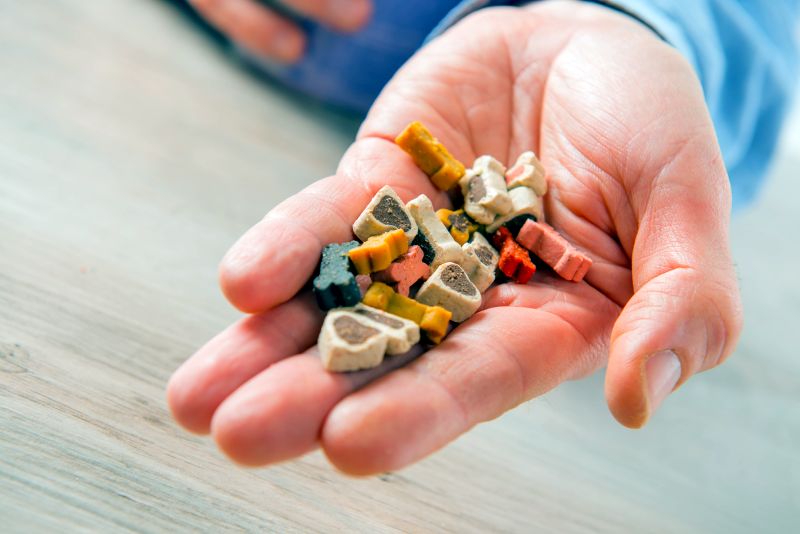
Treats are vital! The relaxation protocol was created relying on positive reinforcement to help your dog feel good and happy while he learns how to relax with you.
Finding the best high-value training treats for your dog may take a little initial effort from you and taste testing by your pooch, but the trials will be worth it.
With the correct treats that your individual dog adores, your dog will learn faster and remember longer. He’ll also be motivated to try as hard as he can to earn the wonderful snacks that you are in control of.
The relaxation protocol’s instructions encourage owners to find small treats (pinky-nail size) that are more interesting than dry biscuits, but not so exciting that your dog cannot take them calmly.
Some good treats to start with include:
- Tiny pieces of cheese
- Boiled chicken bit
If your dog is easily excitable and is laser-focused and alert during his stay, rather than relaxed, try switching to a lower-value treat like kibble.
While high-value treats can be more motivating, some dogs will find the treats a bit too exciting.
Teaching relaxation is different than other training session because generally you want your dog laser focused on you. However, for relaxation, you are looking to reward a calm state.
– Editor note by Meg Marrs
Note that adding some variety to your treat assortment can also be helpful, since your dog can get bored of receiving the exact same treat every time he does a great job. So, don’t be afraid to mix up the treats you use from time to time.
Just remember to keep any food allergies, intolerances, or medication interactions in mind when making your choice.
Some trainers recommend using treats that are high in protein and tryptophan, as they may alter brain chemistry in a manner that’s helpful for training.
The issue is complex and more research is needed before definitive conclusions can be drawn, but it seems to be a high-upside, low-downside proposition.
So, consider selecting treats primarily composed of things like beef, oily fish, or turkey.
For More Precise Marking: A Clicker
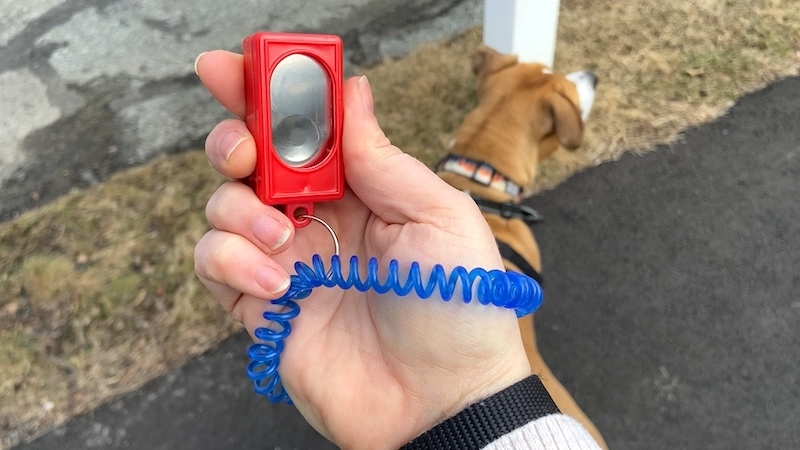
A clicker is useful for teaching and practicing behaviors like the ones in the relaxation protocol, and can help speed your dog’s learning and retention for other new behaviors too. You don’t have to use one, but you will need some audible way to let your dog know when he’s done each training task on the list correctly.
A clicker or verbal marker (“Yes!”) lets your dog know exactly when he’s done a great job, he’s about to get one of those tasty treats you’ve got, and he can take a little break from all the mental calisthenics he’s been doing.
Calm Corner: A Mat Your Dog Can Lay On
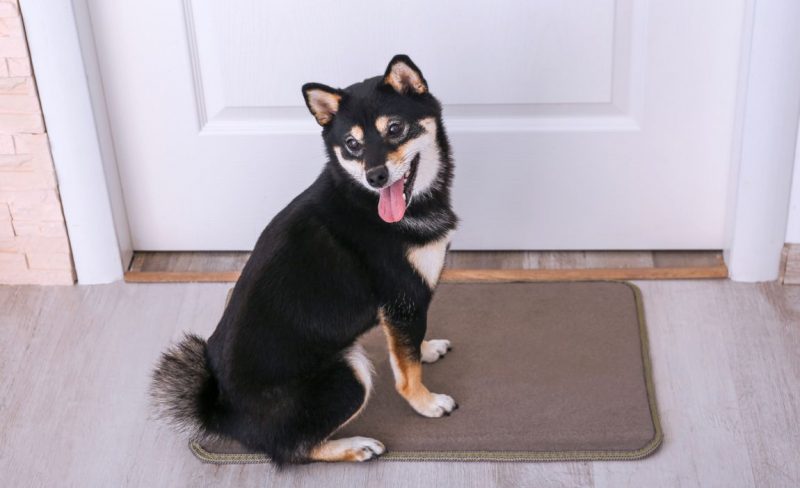
A place mat is another handy piece of equipment for the relaxation protocol, as it’ll help your dog associate a set spot or area with his relaxation time.
The mat needn’t be anything fancy — you can buy a mat made specifically for doggos or just use a bath mat, towel, or small blanket. Your pooch won’t really care what you use, as long as it’s comfy and big enough that he can fit his body onto it.
If you plan on using the mat to help your dog relax while out on the town, make sure to choose a mat that is portable and easy to fold up.
While practicing the protocol, your dog will initially be relaxing in one spot. If you set him up to practice on his mat, you’ll eventually move the mat to new places, allowing him to practice in different settings and generalize the behavior.
However, the protocol is meant to help your dog learn to relax wherever he is, with or without props. You can practice the protocol using your dog’s bed, his crate, or without any dedicated location.
Nevertheless, most trainers start a dog out on a mat, since it usually allows the dog to succeed much faster. Many trainers consider Karen Overall’s Relaxation Protocol a form of mat training.
If the dog is great at doing all the training tasks on a mat in a few new places, I may work through the protocol again without using a mat. This will help make sure he can still do a great job if his mat isn’t available.
Optional Training Gear: A Treat Pouch
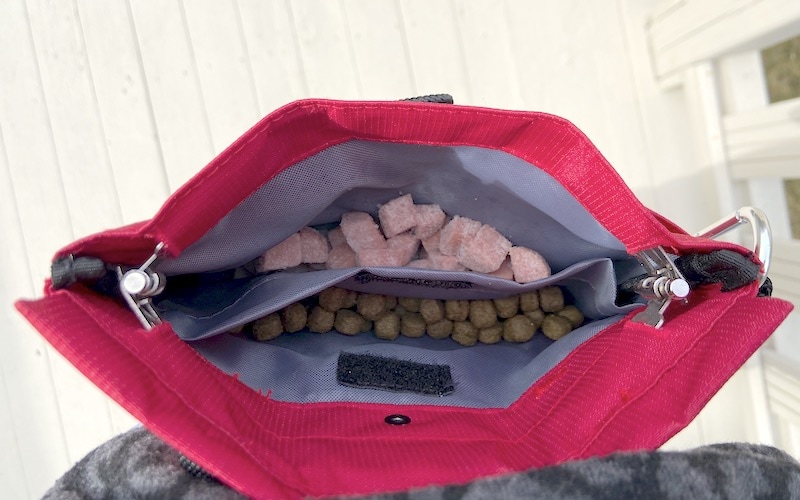
A treat pouch is not mandatory equipment, but it makes having your treats nearby and handy much easier. Using one can also help a dog get into “training mode” if you make it a part of your training sessions.
If you don’t want to buy a treat pouch, just keep the treats in a small plastic bag or container.
A Good Dog Leash: A Helpful, But Optional Tool
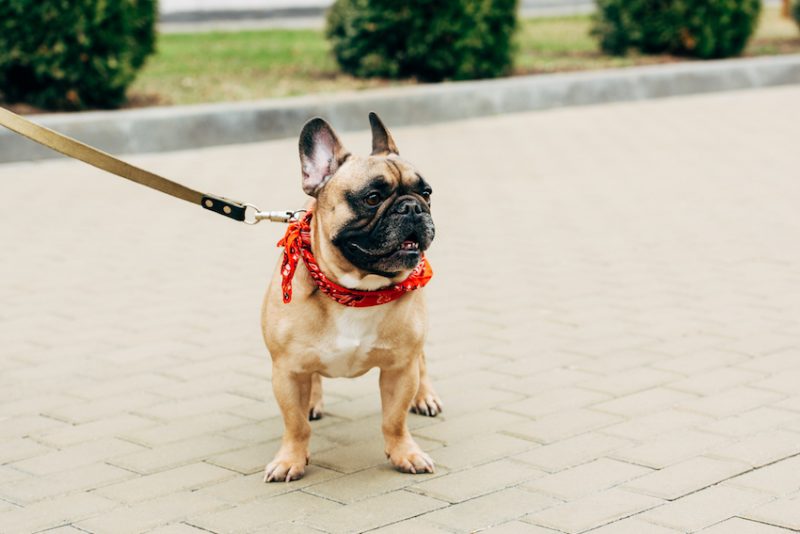
A good dog leash is useful equipment to have nearby as you teach the relaxation protocol.
Tasks like walking away from your pooch and then returning to his side while he relaxes will be easier if you hook him up to a tie down (you can buy a purpose-built dog tie down or simply secure your dog’s leash to a stable object).
Also, if you’re working through the protocol in an unfenced yard or at a park, it’s a good idea to have your pooch secured by a leash or a long line for safety.
However, it’s perfectly fine to go sans leash if you prefer – especially if your dog doesn’t need quite as much guidance and will be able to follow your instructions for lying on the mat without too much effort.
Karen Overall’s Relaxation Protocol Tips & Tricks for Success
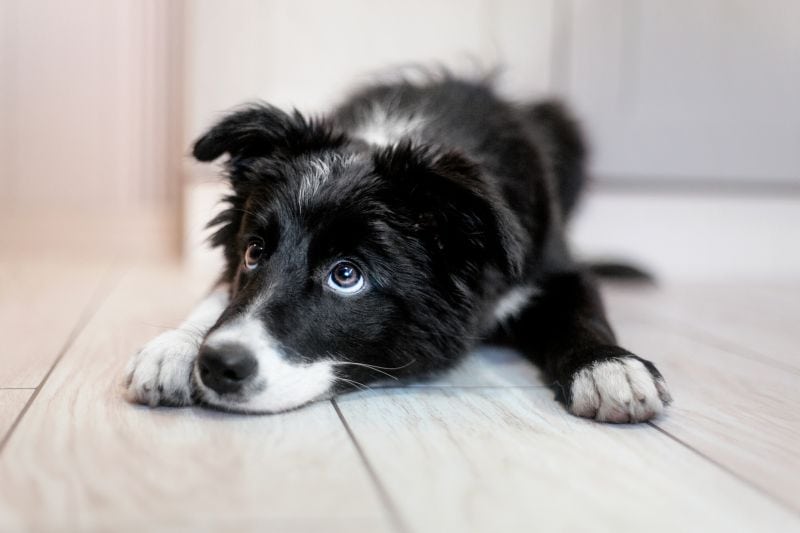
Now that you have some treats and the other helpful tools discussed above, we can move on to the actual training regimen.
Karen Overall’s relaxation protocol was created to help dogs without relaxation skills discover how pleasant and rewarding relaxing can be.
Teaching the relaxation protocol is great for many dogs, but it’s especially valuable for dogs who have behavioral issues.
Dogs who learn how to relax and focus on their caretaker will often respond better to other behavior modification training in the future, such as counter-conditioning or desensitization.
Read through the relaxation protocol and make sure all the instructions and training tasks make sense before you begin.
If your veterinarian or dog trainer encouraged you to work on the protocol, get in touch with them if you have questions or concerns at any point as you practice.
If you are embarking on teaching the relaxation protocol on your own, enlisting the help of a professional force-free trainer is a good idea if you or your dog are having trouble or need some help.
1. Establish a good “Sit” and “Stay” cue first.
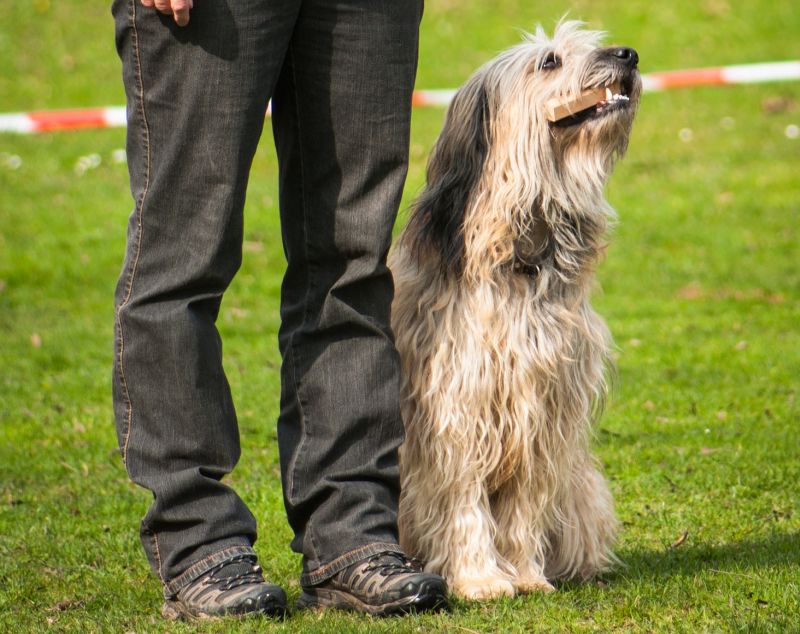
Before beginning the protocol, you’ll want to be sure your dog has already learned two key foundation skills: “Sit” and “Stay.”
Just be sure your dog knows how to do perform these cues for at least 15 seconds before you start working on the protocol.
If your dog changes position (lays down) while waiting in a stay, that is just fine, especially since that position may help them relax even more.
Remember, with relaxation training, you are not looking for a stiff, attentive posture. Instead, you want a relaxed demeanor (for dogs, this usually means lying sideways on a hip).
2. Decide how you want to work with the actual plan outline.
Each day of the protocol lists about 25 tasks to complete. So, you’ll need to decide how you want to simultaneously deal with the training and program instructions.
You have three basic options:
- Some trainers like to print out the whole thing and practice with each day’s printout nearby so they can easily write notes.
- Others like to open the protocol on a computer or tablet so that day’s task sheet is easy to read and scroll through, perhaps with some scratch paper or a notebook available to take notes on.
- Finally, owners and trainers can use an audio version to avoid having to deal with papers or a screen.
The audio version is a particularly helpful format for many owners and trainers. The recording says what each task is, times out each behavior on the recording (pausing for 15 seconds when the task asks for a behavior to last 15 seconds, etc.) and saying “Time” when the duration behavior is complete.
This format also makes it easy for the trainer to pause the recording if necessary, or if she wants to give her dog a release cue between tasks.
3. Progress at a pace that is appropriate for your dog.
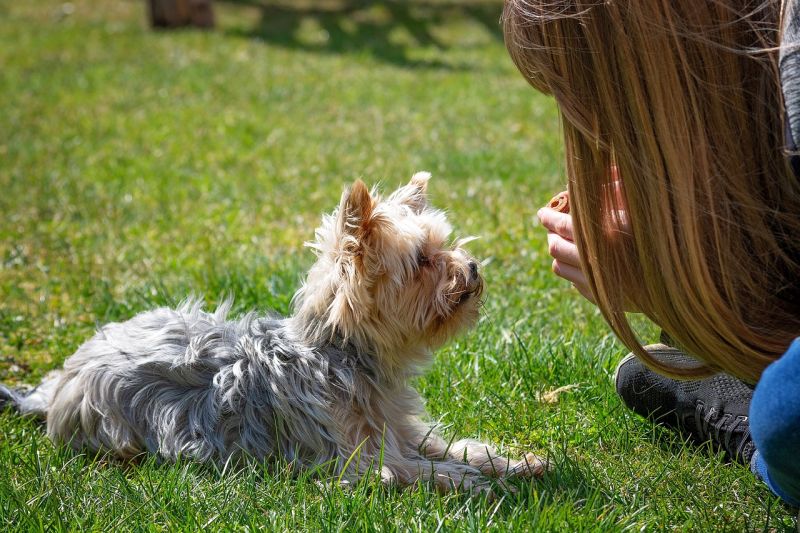
The protocol encourages you to adjust the speed at which you work through the tasks. So, feel free to do more or fewer tasks during each training session, especially if you’re working with a puppy or a dog with a short attention span.
This means that it may take you more than 15 days to work through the relaxation protocol.
Just make sure to keep things fun! If you and your dog aren’t enjoying your time together as you work on it, you are missing one of the goals of the protocol.
No matter how quickly or slowly you go, make sure your dog can successfully accomplish all of the day’s behaviors before moving on to the next day’s list.
3. Be prepared for setbacks.
Things may not always go smoothly while working through the protocol. In fact, you’ll want to watch for a phase about three to seven days into the process, during which your dog’s behavior will get a bit worse.
Don’t worry! This is a pretty common occurrence.
Just be patient and remain consistent in your approach. This phase will pass as your dog realizes that what you’re asking him to do is not that difficult, and that the treats he’s earning as rewards are worth the effort.
4. Break things down if you need to.
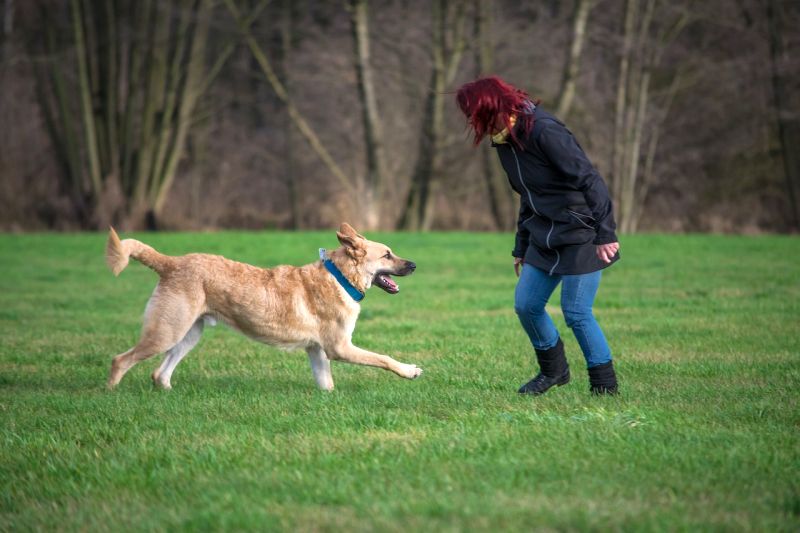
If your dog is unable to correctly complete a particular training task, break difficult tasks down into smaller, “bite-sized” steps that are easier for your dog to accomplish.
For instance, if your dog cannot lay still and wait while you disappear for five seconds and return (one of the steps in the protocol), adjust the goal to one second.
Once your dog can succeed at this new task, gradually increase the task’s difficulty until your dog is able to perform each behavior of the protocol correctly.
5. Do your best to relax while practicing the protocol.
Your dog will often take his cues from you, and if you remain calm, it will encourage your pooch to remain calm too.
In fact, one important thing that practicing the protocol will teach your dog is that your calm behavior is a nonverbal cue for him to relax as well.
6. Watch for signs of stress in your dog.
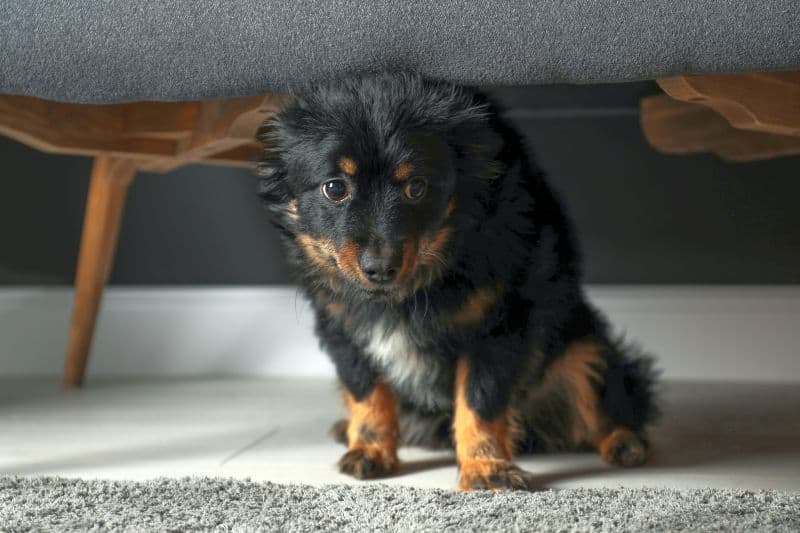
Because the goal of this process is to teach your him to relax and remain calm, you must monitor your doggo for any signs of stress.
Some of the most common signs of stress include the following:
- Retracted lips
- Dilated pupils
- Lowered head
- Ears held down and back
- “Scanning” behavior
- Tail tucking
- Whining
Be sure to brush up on your dog body language skills so that you know what to keep an eye out for when training!
If you note any of these signs, try to wrap up your session quickly and end on a good note by asking for a simple, easy behavior.
While the goal of this exercise is to relax, chilling out is not easy for all doggos. It might take some practice for them to loosen up!
Also, if your dog is having trouble staying focused, or he is starting to have difficulty succeeding at an increasing number of the tasks, it may be time to end the session positively.
Then, play a favorite game for a few minutes or feed him a meal.
7. Practice in different places and environments.
Once you have worked your way through the relaxation protocol from beginning to end, you can start to practice it in new locations. This will help your dog generalize (learn to apply the lessons learned in different situations).
Choosing spots throughout your house, in your yard, and in other new locations will help your dog be more successful more often.
Another important way to help your dog generalize is to practice with other family members so he can perform all of the protocol tasks if they ask him to.
Just make sure the new situations are not too difficult — add distractions gradually and in such a way that your dog will be likely to succeed.
Set him up for success!
What Types of Problems Does the Relaxation Protocol Address?
In a stressful world, caring for a dog who relaxes more sounds like a great idea! However, some dogs with specific behavior issues will benefit more than the average pooch from learning how to calm down and relax via the protocol.
Hyperactivity & Overarousal
Some dogs seem to be so energetic and exuberant all the time that it seems like they never sit still. Dogs with these types of behaviors are sometimes called hyperactive or hyperkinetic.
By contrast, dogs who get extremely excited about any number of things, such as a person approaching them or being petted, and then have trouble calming back down are often called overaroused.
Dogs labelled as either of these things often display some specific behaviors:
- They exhibit high energy levels.
- They’re easily distracted.
- They fidget and move around a lot.
- They’re impulsive.
- They have a hard time calming themselves.
The relaxation protocol’s series of tasks keeps busy dogs guessing. They eventually realize that they don’t know exactly when the task they’re working on will be complete and when they can move on to doing something more active or exciting.
But, the further along they get as they practice the protocol’s tasks, the more they learn that the relaxing itself is pleasant and rewarding.
Some trainers recommend more exercise for dogs who display hyperactivity or overarousal, invoking the adage that tired dogs are good dogs.
But while physical exercise is important and good for busy dogs to engage in, it’s important to avoid overdoing it.
In fact, as determined by Justin S. Rhodes and colleagues in a 2004 study published in Behavioral Neuroscience, exhausted mice had more difficulty learning than the control group.
If you are working through the relaxation protocol with your dog, moderate physical exercise coupled with mental exercises like smart toys can keep his brain stimulated and in a better mental state to learn.
But, be careful to time your exercise outings thoughtfully.
Some dogs who display inappropriately zany behavior are taken out for an energy-expending activity shortly after they misbehave. This reinforces the poor way the doggo chooses to use his energy.
In effect, giving your dog some exercise time when he’s bouncing off the walls teaches him that annoying behaviors result in experiences and attention he enjoys!
Instead, stay ahead of your dog’s energy curve and give him activities and puzzles to do before he acts out. This can give your dog more opportunities to be reinforced for his calm behaviors.
Fearfulness & Anxiety
Some dogs are brimming with anxious energy or fearful behavior. This feeling can be caused by new or unfamiliar situations, but some dogs are afraid of familiar situations or sounds they encounter while at home as well.
Dogs living fearful lives are often stressed, and teaching anxious dogs how to relax can help reduce the fear and stress they feel.
Fearful and anxious dogs often exhibit behaviors such as:
- Trembling or shaking
- Drooling
- Hiding
- Tail tucking
- Escape behavior
- Panting
- Pacing
- Urination/defecation
- Whale eye
- Crouching
- Yawning or lip licking
- Lifting a paw
- Growling
Teaching anxious and fearful dogs how to first relax in their home by working on the relaxation protocol can be life-changing for the dogs and their people.
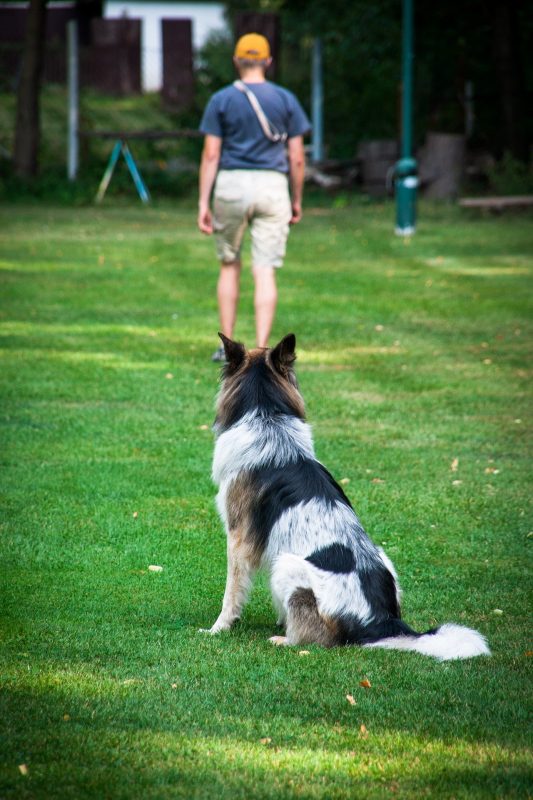
Once a dog has learned how to relax in familiar settings, issues such as separation anxiety and noise phobias are often easier to treat (often via desensitization and counter-conditioning).
When dogs display fearful or anxious behavior, these feelings often have deep roots in the dog’s life, and some dogs are prone to those feelings because of their genetic makeup.
This means that while fearful dogs can learn how to relax and feel less afraid of the things that scare them, changing these feelings will require consistent, positive training experiences.
Separation anxiety and other fears that dogs have relating to being alone can be worked on more successfully after completing a training program like the relaxation protocol.
One of the tasks that is introduced early on during the protocol’s practice is walking away from your dog and returning after a few seconds.
While this may not seem like a huge accomplishment, helping dogs understand that they can be away from their people for any length of time is a great way to help them understand that their people will always come back to them.
Never punish a dog who is displaying fearful behavior — this can just add you to the list of things your dog fears. Fear and anxiety can slow the speed with which they learn from you and erode the trust they have in you.
Reactivity & Focus Issues
Dogs who hyperfocus on people or animals, as well as those who display reactive behaviors in social situations can often benefit from practicing the relaxation protocol.
Reactive dogs often exhibit intense behavior because they feel powerful emotional responses to their triggers. Unfortunately, these reactions are frequently interpreted as aggression.
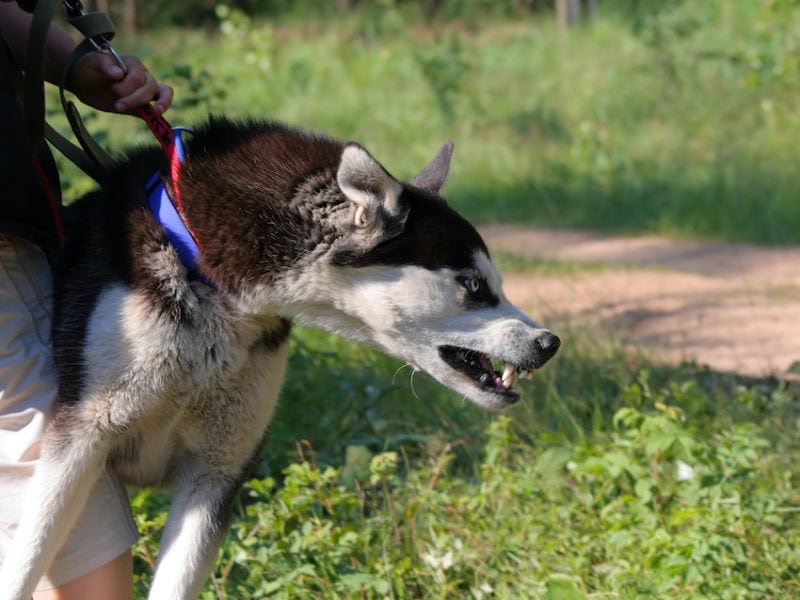
Dogs who are having trouble focusing on their owners because they are hyperfocused on their trigger stimuli often benefit from more positive socialization experiences. This is especially true if they can learn to relax while socializing.
Luckily, learning how to relax using the relaxation protocol is a great place to start to help dogs with these issues.
Dogs who are being reactive or can’t focus in social situations often exhibit behaviors like:
- Intense distraction
- Inability to take treats (or may take treats too roughly)
- Barking
- Jumping
- Lunging
- Snarling
Since these behavior patterns can look and sound intense, working with a professional force-free trainer is a great idea if you want to err on the side of caution. And doing so will be helpful for both your dog and the people and animals that may be triggering him.
What if you go somewhere new to practice the protocol’s training tasks, but your dog has trouble succeeding? Try to find a place to practice that is less distracting.
If this isn’t possible, reduce the level of distraction for your dog by adding distance between him and the distractions until he is able to succeed.
Also, ask for brief, easy tasks and keep your training sessions short and sweet when you first take Rover’s relaxation show on the road.
Why Is the Relaxation Protocol so Helpful and Popular with Trainers?

Karen Overall’s relaxation protocol is an excellent piece of the training puzzle for many dogs and the people who share their lives.
There are a variety of reasons the protocol is particularly helpful, but three of the most important include:
- Since dogs from different behavioral backgrounds can learn to do the protocol, it gives owners and trainers a good baseline from which to start, no matter their ultimate training goals.
- Practicing the protocol also improves the human-dog bond, as it encourages lots of pleasant, rewarding interactions.
- It also helps dogs get rewarded consistently and frequently for their hard work, which increases the reinforcement history that they have with the behaviors practiced. This makes it easier for a dog to perform those behaviors correctly when cued, since the more success he has had, the more likely he will be to succeed.
Karen Overall’s Relaxation Protocol: Dos and Don’ts
In addition to the tips and tricks outlined above, there are few things you’ll want to do, as well as a few things you’ll want to avoid doing while working through the protocol.
The Dos:
- Practice for an amount of time that is fun and productive for you and your dog. You will see more progress with short, consistent practice sessions than occasional marathon sessions. If you ever notice your dog’s success rate or attention span starting to drop during a training session, ask for an easy behavior and end your practice with a success.
- Always “pay” your dog for doing good work. Part of practicing the relaxation protocol is building a positive, trusting relationship with your dog, and treats are a great way to help keep your dog engaged and motivated while the two of you practice and learn something new together.
- Give the relaxation protocol a chance to make a difference by practicing regularly and following the instructions provided with the protocol. Behavior modification training using positive reinforcement may not change all of your dog’s problem behaviors overnight, but the changes it makes slowly over time are beneficial and long-lasting.
The Don’ts
- Don’t chastise or punish your dog. This protocol is meant to build a positive, trusting relationship between you and your dog, and anytime he’s worried that he might get in trouble for making a mistake, his learning capabilities go down. Focus on and reward his successes and ignore his mistakes (but be ready to adjust a difficult task’s goal so he is more likely to succeed next time).
- Don’t skip any of the parts. The relaxation protocol is organized in such a way that easy and more difficult tasks are interspersed in each day’s task list. The difficult tasks gradually improve your dog’s skills, and the easy tasks help keep your dog excited about his successes.
If Karen Overall’s Relaxation Protocol seems like it just isn’t working for you or your dog, another trainer, Suzanne Clothier, created a relaxation protocol of her own in 2012 called the Really Real relaxation protocol.
This protocol is a couple of pages of general guidelines outlining how to encourage a dog to relax through self-modulation, and includes much less behavior cued by the owner.
***
Karen Overall’s Relaxation Protocol has shown itself to be an excellent training tool to help dogs without relaxation skills, and some with particular behavioral issues, improve their skill set so they can relax and focus better than ever.
Improving the bond you have with your dog while bolstering his ability to calm down is a priceless gift you can share with your best buddy as you enjoy your lives together.
Do you have a dog that never seems to relax? How long did you practice Karen Overall’s relaxation protocol before you began to notice a relaxing difference in your daily life?
Share your experiences (and any questions you may have) in the comments below!
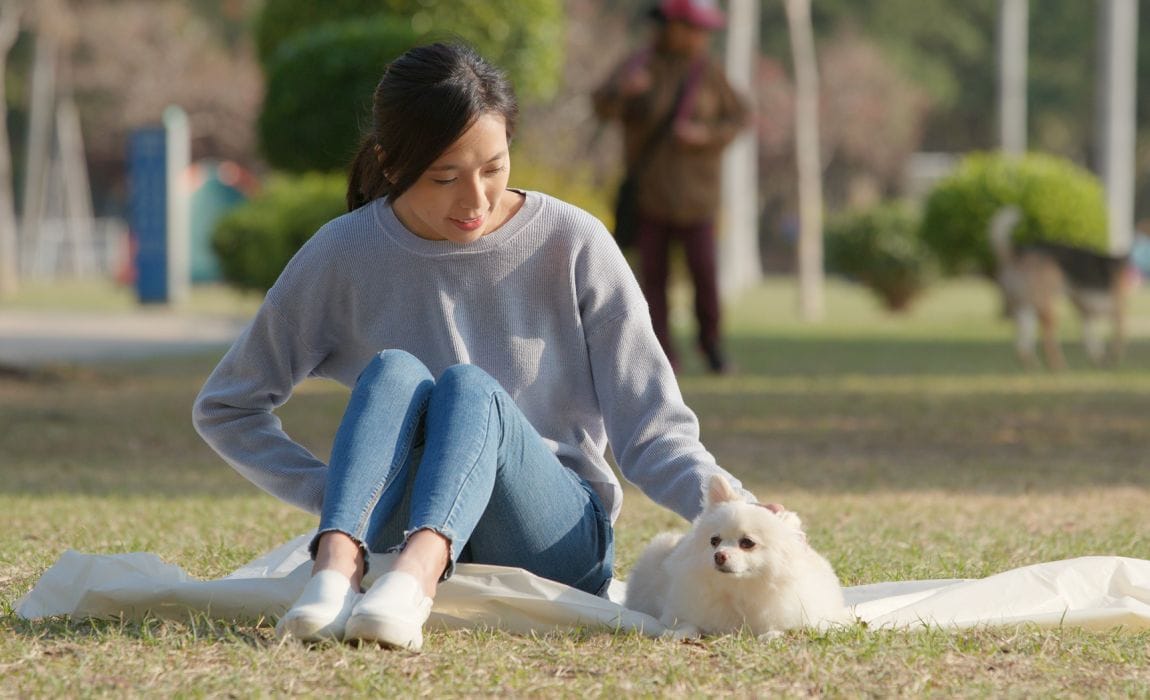

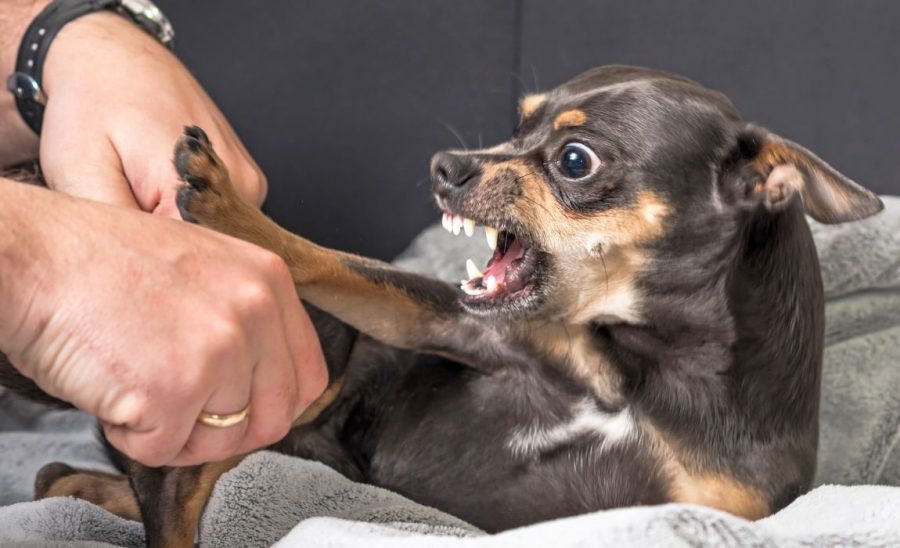


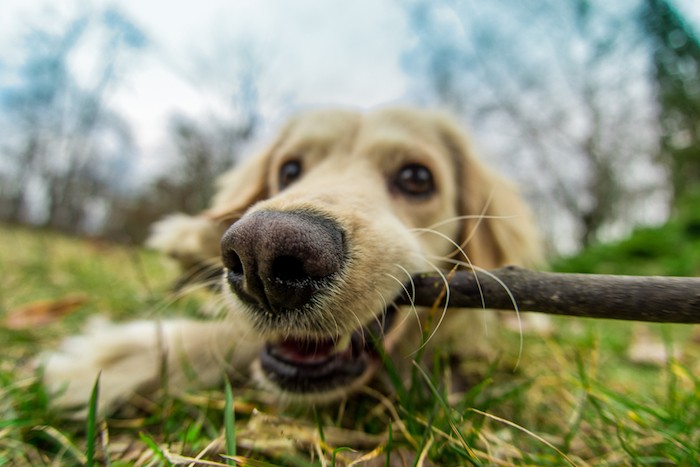
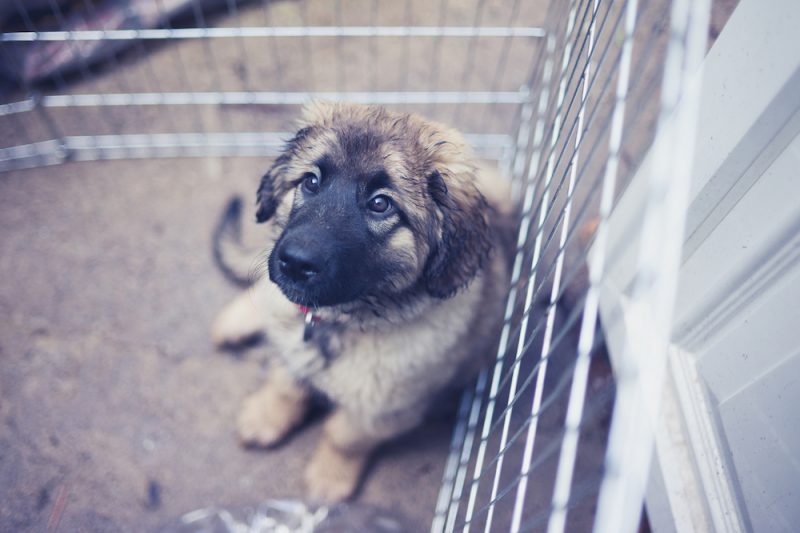
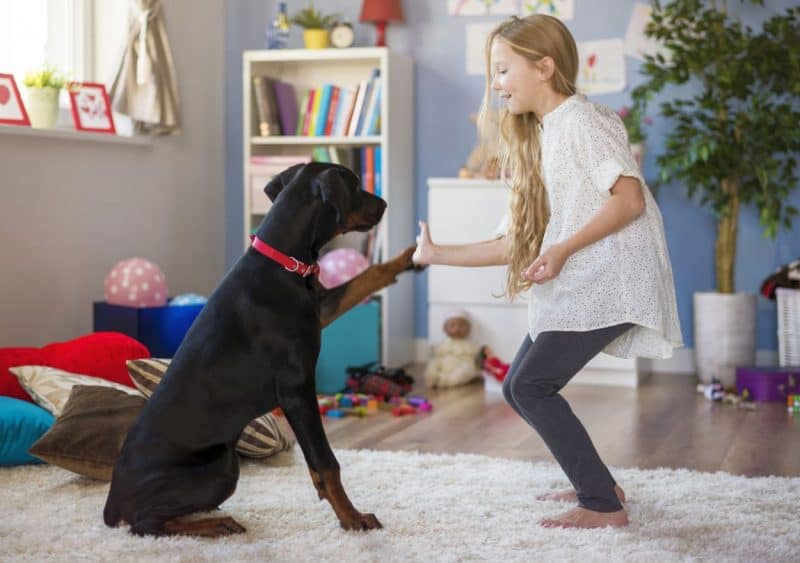
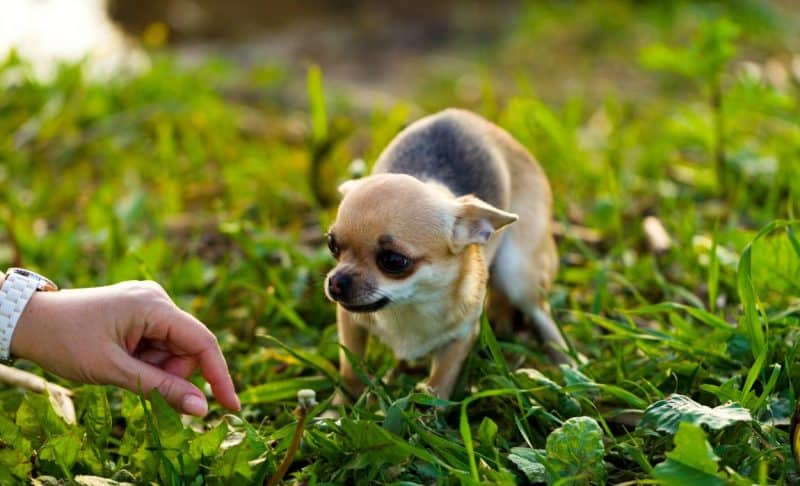
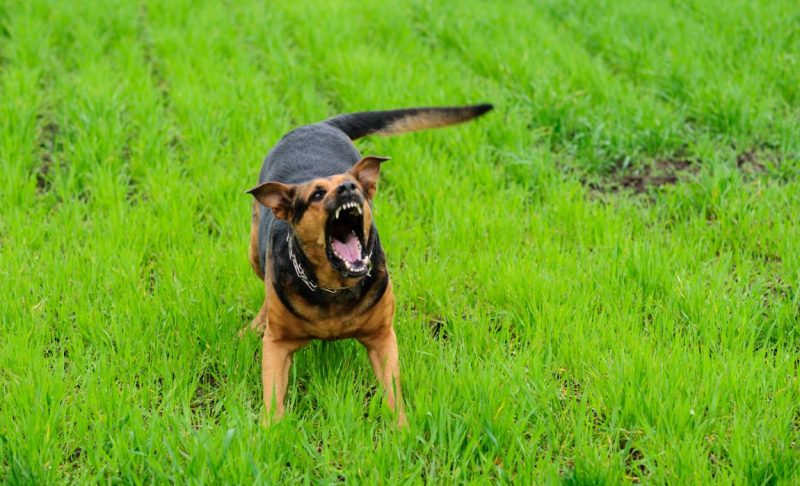
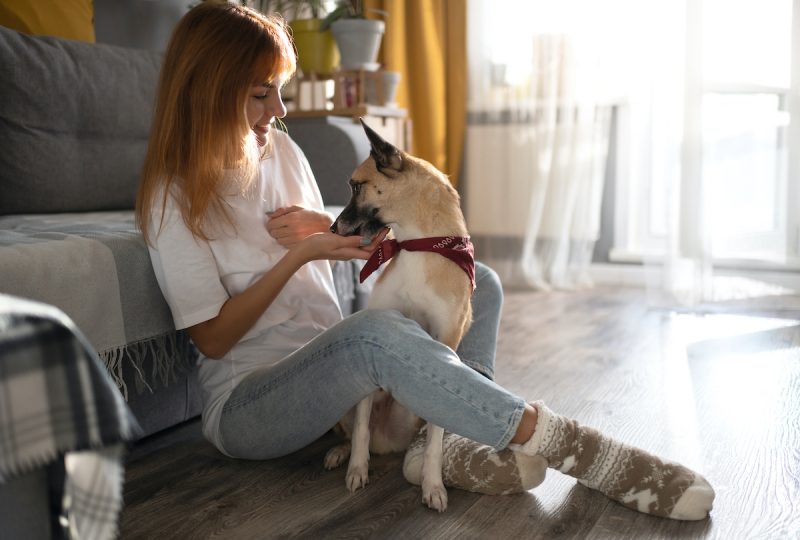
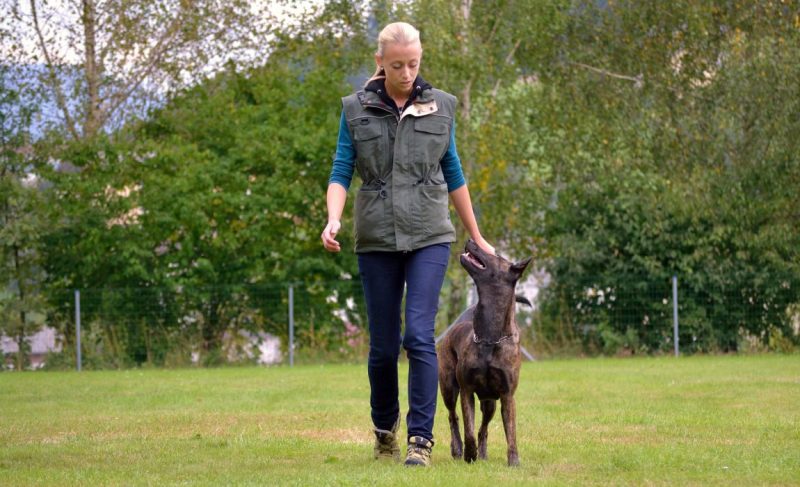

Leave a Comment